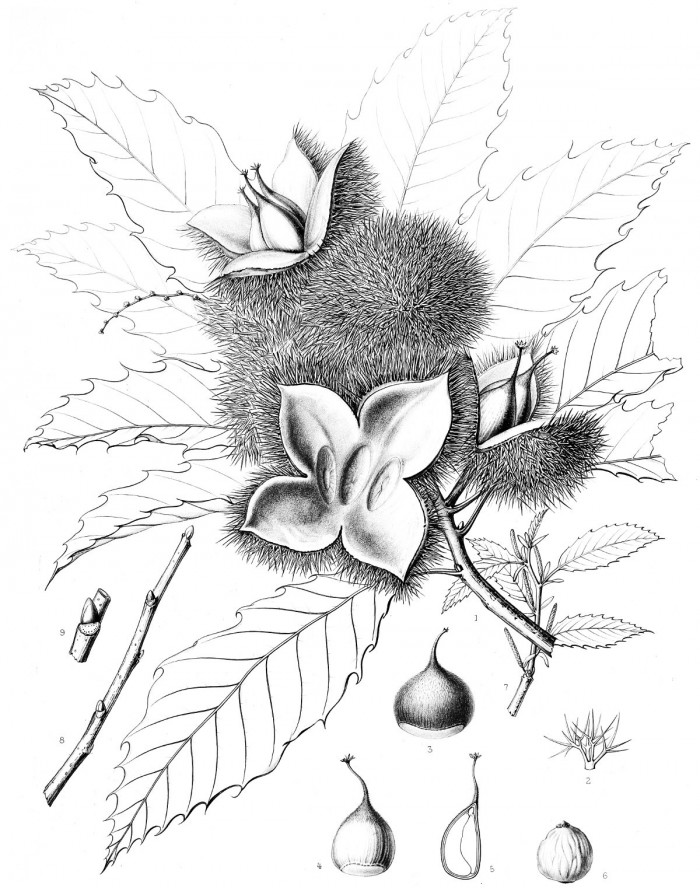Castanea dentata (Marshall) Borkh. - syn. Castanea americana (Michx.) Raf. - Fagaceae
American chestnut, Amerikanische (Ess-) Kastanie
Deciduous tree, up to 30m tall, native to eastern North America; leaves elliptic-lanceolate, toothed; male flowers in catkins, female flowers at the base of the spike; nuts enclosed in a spiny involucre.
„Once an important hardwood timber tree, the American chestnut is highly susceptible to chestnut blight, caused by an Asian bark fungus (Cryphonectria parasitica, formerly Endothia parasitica) accidentally introduced into North America on imported Asiatic chestnut trees… The nuts were once an important economic resource in the US, being sold on the streets of towns and cities, as they sometimes still are during the Christmas season (usually „roasting on an open fire“ so their smell is readily identifiable many blocks away). Chestnuts are edible raw or roasted, though typically preferred roasted.“
http://en.wikipedia.org/wiki/American_chestnut
„American chestnuts (Castanea dentata) and Chinese chestnuts (C. mollissima) grown in the United States and imported European (Italian) chestnuts (C. sativa) were analyzed for proximate, mineral, and amino acid composition. Unlike most other tree nuts, chestnuts are low in protein and fat but high in carbohydrate. American and Chinese chestnuts were higher than European chestnuts for protein, ash, crude fiber, iron, magnesium, phosphorus, and copper but lower in fat. Essential amino acid patterns of chestnuts, as measured by chemical scoring, were about the same for American, Chinese, and European chestnuts.“
[Nutrient data on chestnuts consumed in the United States., McCarthy, M.A., Meredith, F.I., Economic Botany, Vol.42(1), 1988, 29-36]

Sargent, C.S., The Silva of North America, vol. 9: t. 441 (1898) [C.E. Faxon]
